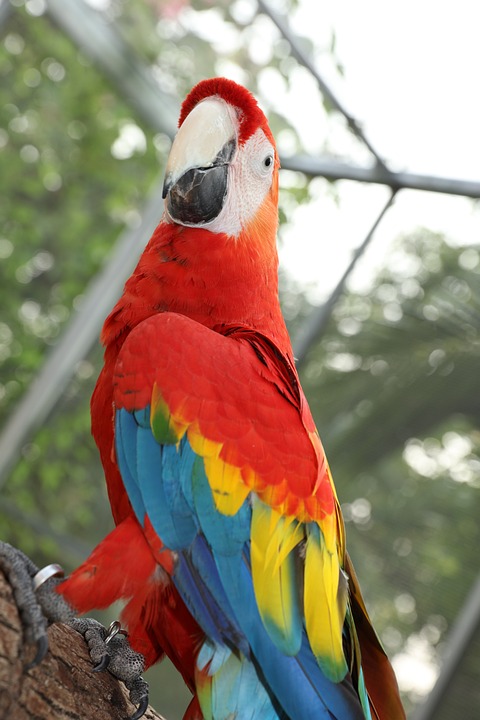Parrots are fascinating creatures known for their vibrant colors, intelligence, and ability to mimic human speech. As parrot owners, it is important to understand their unique sleep patterns to ensure their well-being and create a conducive environment for them to rest. In this article, we will delve into the intricacies of parrot sleep, exploring their sleep requirements, behaviors, and common FAQs.
Parrot Sleep Requirements: How Much Sleep Do They Need?
Parrots, like humans, require sufficient sleep for optimal health. However, their sleep patterns differ significantly from ours. On average, parrots need around 10 to 12 hours of sleep per night. This period of uninterrupted rest is crucial for their physical and mental well-being.
Understanding Parrot Sleep Behaviors
1. Nocturnal vs. Diurnal Sleepers:
– Parrots are diurnal creatures, which means they are active during the day and sleep at night.
– However, captive parrots often adapt to their owners’ routines and tend to sleep when the household is at rest.
2. Light Sleep vs. Deep Sleep:
– Parrots experience both light sleep and deep sleep phases.
– During light sleep, they may be easily awakened by external disturbances and can be observed opening and closing their eyes intermittently.
– Deep sleep is characterized by closed eyes, relaxed muscles, and minimal movement.
3. Sleep Postures:
– Parrots exhibit various sleep postures, including perching, standing on one leg, or even hanging upside down.
– These postures may vary depending on the species and individual preferences.
4. Napping:
– Parrots may take short naps during the day to supplement their sleep.
– These naps are usually brief, lasting anywhere from a few minutes to an hour.
Creating a Restful Environment for Your Parrot
1. Provide a Quiet and Dark Sleep Area:
– Designate a quiet and dark space where your parrot can sleep undisturbed.
– Covering the cage with a breathable cloth can help create a cozy and secure sleeping environment.
2. Maintain Consistent Sleep Schedule:
– Establish a routine where your parrot goes to bed and wakes up at the same time every day.
– Consistency in their sleep schedule helps regulate their internal body clock.
3. Minimize Disturbances:
– Avoid loud noises, sudden movements, or bright lights near your parrot’s sleeping area.
– Ensure that household activities during their sleep hours are kept to a minimum.
Common FAQs about Parrot Sleep:
Q1. Can parrots sleep with lights on?
– Parrots require darkness to experience deep sleep. It is recommended to provide a dark sleeping environment for them.
Q2. Should I cover my parrot’s cage at night?
– Covering the cage with a breathable cloth can create a sense of security and help block out distractions, promoting better sleep.
Q3. How can I tell if my parrot is sleeping?
– Closed eyes, relaxed muscles, and minimal movement indicate that your parrot is in a state of sleep.
Q4. Do parrots dream?
– While it is challenging to determine if parrots dream, research suggests that they do experience rapid eye movement (REM) sleep, a phase associated with dreaming in humans.
Q5. What happens if my parrot doesn’t get enough sleep?
– Inadequate sleep can lead to behavioral issues, compromised immune system, and overall health decline in parrots. It is essential to prioritize their sleep needs.
Understanding and accommodating your parrot’s sleep patterns is crucial for their overall well-being. By providing a suitable sleep environment and maintaining a consistent routine, you can ensure that your feathered friend gets the restful sleep required for a happy and healthy life.









